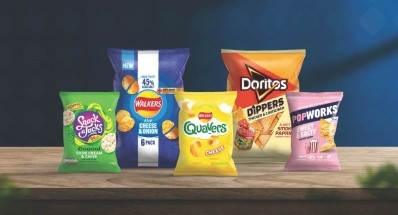Reformulating for food waste elimination to unlock monetary value for your business

Speaking at Food Ingredients Europe (FIE) 2022 in Paris, France, Kerry’s global marketing director Emma Cahill called for the industry to come together to eliminate food waste around the world; her address punctuated by a stark reminder that the global population is set to hit 10 billion people by 2050 and that we would need three planets’ worth of resources to feed all of those people.
“Is this an urgent problem? With inflation we are facing as consumers and as an industry, it’s impacting everybody. And we’re seeing different behaviours emerging among consumers,” Cahill explained.
“Poorer consumers have nowhere to go as the price of food goes up, their only solution is to buy lower volumes of food. So, we see industry partners of ours trying to protect those vulnerable consumers and maintain the market price of their products.
Affluent customers
“Additionally, we see affluent consumers want to maintain their spend despite the inflation and they’re trading down and this is an opportunity to offer greater value to those middle aisle products in the supermarket and is a great reason for innovation in this industry.”
Cahill listed the key sticking points causing waste in the supply chain – from inefficiencies, margin erosion and contamination in the production stages, to packaging failures and rejections sparking recalls further down the line. But one of the major sources of food waste, according to Cahill, is consumers who were unsure about the safety of their food.
“We talk about food safety as a non-negotiable,” she added. “If consumers have any concern about the safety of their food, it will go to waste.
“We surveyed thousands of consumers to understand what they’re actually thinking versus food safety legislation – so what is an indicator of food safety to that consumer: the expiration date, the appearance, indicators of hygiene, packaging, the types of ingredients that are on the label?”
Ways to extend shelf life
She continued: “If we can build trust with those consumers by protecting and extending the shelf life of food, we will actually help reduce food waste.”
Based on the information gathered by Kerry, consumers are actively changing their buying habits to make sure they purchase food with a longer open pack shelf life and are more likely to make repeat purchases of food and drink products that will remain fresher for longer once opened.
To this end, manufacturers can reformulate their products to improve their shelf life and Cahill went on to give examples of how this can be done.
“I’m going to pick a bread processor in this example. We’ve all baked at home and the same thing happens in the industry – dough sticks to the bowl, to your scrapers, there’s labour costs involved in cleaning that machinery. Do we measure this as waste and a cost, or is this just the cost of doing business?
“What if you could add enzymes to your dough to stop it sticking, reduce that labour cost and make that dough go into bread instead of going to waste?”
Another example she gave involved the meat processing industry, with particular focus on the usage of hot water to decontaminate carcasses.
“That cooks the outside of the meat,” she said. “When we cut a tiny section off that meat, are we measuring that as waste? Could we switch to an ingredient and save that meat from waste and allow it to feed someone instead?
“And in foodservice, if we think of burger buns that are stacked up at back of house and by the time somebody opens them they’ve totally fallen apart and half of them are going to waste because they don’t look good enough to put in front of consumers. Could we build in a little resilience – some glaze, some emulsifiers – to make them really bounce and survive the food chain?”
Check out seven things that were learnt on the show floor at this year’s FIE.
















